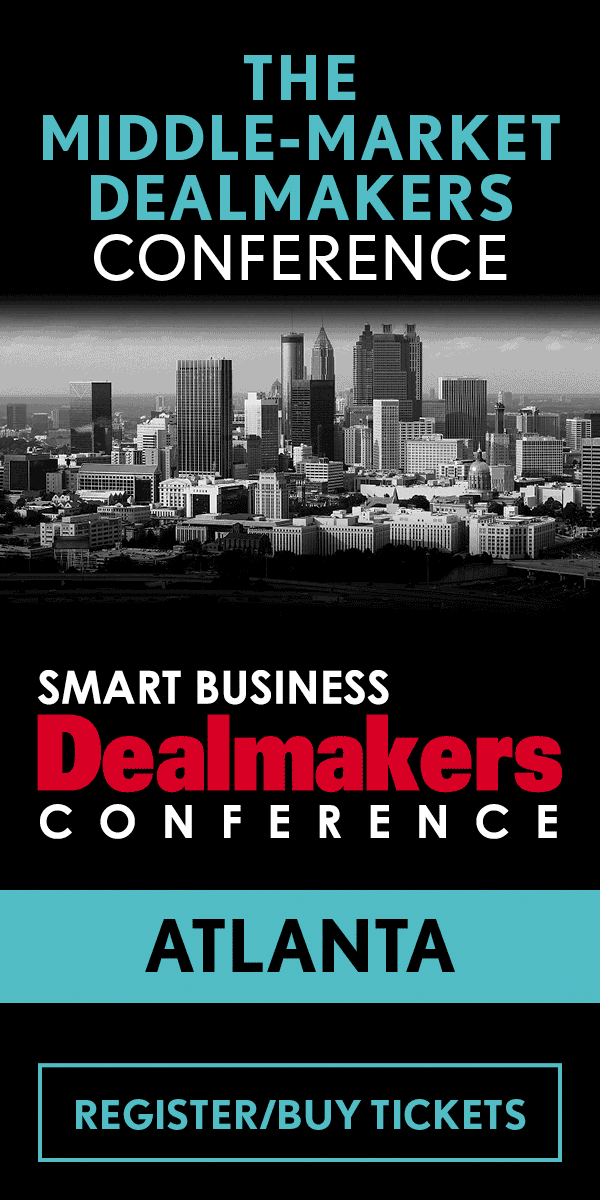When Kyle Stanbro, managing partner of 424 Capital invests in a business, he says he immediately begins thinking about how he’s going to sell the business. That happens in part through a value creation planning exercise.
“We close a deal, we're sitting down with the management team and reverse engineering, how are we going to create that outcome?” Stanbro said at the 2024 Boston Smart Business Dealmakers Conference. “And we all like to map out a straight line to success. Just, we all know, in small businesses, that's not the case. So, it's how are you going to deal with the ups and downs in between? But it's still really helpful to create, how could we possibly get there.”
Something else they consider is the markets the company is going to attack? They want to understand the addressable market today and, while they’re not looking to go out and do something completely new, they’ll consider how to edge out the total addressable market over time. That could mean, for instance, expanding capabilities.
Also part of the value creation planning process is how they’ll address the sales and marketing aspect as well as the people aspect, having the necessary conversations to ensure everyone is working from the same playbook.
Determining the best structure is also important. In cases in which the structure is complex, possibly because of a lot of acquisitions, he says they do a lot of planning with their law firm about how to consolidate some of those entities — such as which should be a pass-through LLC versus what should remain as a C Corp. Along the way, he says there’s also the question of how to manage the tax differentials. For that, he says he works with a professional services team to guide them through and help make that a clean transaction. That doesn’t happen just ahead of a transaction. Instead, it was from day one, strategically planning out what the roadmap of the business would look like.
“The legal and financial help along the way was really key to make making sure when we put that book out, we were really buttoned up as an organization,” he says.
Another key area of diligence is tax, particularly state sales tax. For that, he says he makes sure that they’ve got professionals constantly looking at that.
“State tax rules are nuanced,” Stanbro says. “There's a gray area — no surprise to anybody. States all look at things differently. And they look at one product set differently than another. It can be a real gotcha if you're not being careful and thoughtful about how you're organizing that in your organization over time. So, it's really critical.”
Because they’re investing in the lower middle market, he says they're looking to build scale. That means acquisitions are part of their strategy, which, he says, is a fully integrated model because scale matters.
“A $2 million EBITDA business trades a lot different than a $20 million EBITDA business,” he says. “That scarcity of asset value (means) creating something meaningful that's integrated. It's hard to do, but there's not a lot of assets out there that will look like it. And then ultimately, you're bringing in the whole universe of buyers along the way. So for us, it's key because we don't see a path forward on getting to true scale without doing some acquisitions along the way.”
Something else they do to maximize value that involves longer-term thinking is to align incentives across the team. He says they create incentive option plans and make sure that the people around the table that are going to be there when the business is sold have skin in the game along the way. He says the also align incentives with their banker along the way to make sure that they've got compensation structures for sales that are going to overachieve.
A big area that they focus on when they sell businesses that have recurring revenue is focusing on the run rate of the business and understanding that data.
“So, basically, run rate, the way we look at, if we sold no other business leading into a sale, what is the revenue and earnings profile of that business?” Stanbro says. “And that's what we're really trying to market our businesses on, from a recurring revenue perspective. That's very different from GAAP TTM, if you're growing. That could work against you if you're not growing. But really understanding your data so that you can talk to driving run rate and selling on where the business actually is contractually today versus where it's been on a TTM basis, because you have a lot of businesses where GAAP might say one thing, but maybe you have a bunch of projects that you sold that aren't getting implemented for six months, or 12 months, and so really trying to sell off of that.”
Something else they like to do in the last year of an investment is to make sure that their sales folks are incented in the commission structure. He says they’re not opposed to doubling commissions the last year leading into a sale. But, bigger picture, he says it’s about aligning incentives to ensure everybody's bought in.
“We're big fans of bringing the entire management team into the process of, ‘Hey, we're going to sell,’ so that's not a surprise to anybody,” he says. “That's part of that value creation planning on the front end, as everybody knows our timeframe and what we're looking to do.”




